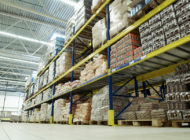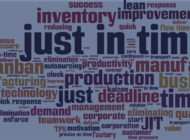 It’s no secret that good logistics partners play a critical role in helping companies move their physical shipments across the global supply chain. But did you know that they can also help improve plant throughput and financial performance through operation of an inbound warehouse?
It’s no secret that good logistics partners play a critical role in helping companies move their physical shipments across the global supply chain. But did you know that they can also help improve plant throughput and financial performance through operation of an inbound warehouse?
That’s right — experienced logistics service providers can help reduce inventory, free up valuable resources, make room for more equipment and employees, and enhance cash flow.
Rather than storing raw materials and components in a section of your factory, consider storing these goods at an inbound warehouse managed by an experienced third party logistics provider (3PL).
Here are four benefits of using a 3PL warehouse for your inbound supply chain:
1. Enhance your company’s cash flow.
Why tie up cash and your buyers’ time sourcing non-strategic parts and materials? We’re talking about things like boxes, packaging, nuts, bolts, and other consumable parts. The right 3PL can do parts procurement on your behalf and invoice you only as they are used.
This improves your cash flow and frees up buyers to work with more strategic suppliers. The 3PL will charge a finance fee for purchasing and holding the inventory, but the benefits you gain in time and focus will far outweigh this cost.
2. Reduce plant inventory levels.
Are you purchasing parts and other raw material inventory, only to have those items sit for weeks or months prior to consumption? If so, consider working with your suppliers to institute a vendor managed inventory (VMI) model.
VMI services alter the traditional purchase order process. Rather than invoices, you would send daily demand signals to your suppliers or 3PL agent and replenishment orders would be triggered based on this data.
Suppliers themselves would ensure sufficient stocks were available to support daily manufacturing needs and they would retain ownership of the inventory until consumed. A 3PL can help manage a VMI strategy.
3. Free up physical space in your plant.
If your growing enterprise is scrambling to find space for new equipment and people—and if expansion and relocation are out of reach right now—consider moving raw materials and component parts to a 3PL inbound logistics warehouse.
Your 3PL will take on the task of receiving and storing materials, managing the inventory, and shipping products to your plant based on demand signals. You can then convert the former storage space in your plant to actual production space to increase throughput.
4. Improve plant productivity levels.
If you’re paying a technician or assembly worker to open boxes, search for parts, pick up trash, and other non-valued-added activities, then you’re wasting valuable resources. These tasks can be done faster for less by a 3PL. The right partner will not only receive supplier inventory and handle repetitive tasks, but can also perform more sophisticated pre-manufacturing steps, such as pre-assembling parts and creating kits of parts used at specific points on the manufacturing line.
Shift your logistics strategy
While larger manufacturing operations have shifted to lean models that largely outsource related logistical tasks, many small and mid-sized operations continue to manage these tasks with internal staff within the plant facility.
The good news is that the same advantages that big manufacturers are using can help you dramatically improve your own plant’s financial performance — in terms of both cost and throughput. But that will require a shift in strategy.
For more ideas on how to leverage a 3PL for plant support, read Kanban’s ebook, Use Logistics Partners to Improve Plant Throughput and Financial Performance: Four Essential Strategies, online here.



